
设计单位 Steven Holl Architects
项目地点 美国休斯顿
项目面积 约22038平方米
建成时间 2020年
休斯顿艺术博物馆的南希和里奇金德中心以多孔隙为特点,建筑首层向四周开放。七个花园切分了形体的外围,对应不同的入口和高度。其中最大的花园位于森内特街和主街道的转角处,作为新建筑的主入口。站在里奇金德中心的前厅,人们可欣赏建筑四周的花园,并感受其对于社区的开放性。
The new Nancy and Rich Kinder Museum Building is characterized by porosity, opening the ground floor at all elevations. Seven gardens slice the perimeter, marking points of entry and punctuating the elevations. The largest garden court, at the corner of Bissonnet and Main Street, marks a central entry point on the new Museum of Fine Arts, Houston campus. When standing in the new entrance lobby of the Kinder Building, one can see gardens and lush Houston vegetation in four directions and feel the inviting energy of a new sense of openness to the community.


新建筑的发光顶篷向天空180度展开。由云圈得出的曲线向下推压,形成凹陷的屋顶,并使得自然光以精准的角度滑入室内,这对顶层的画廊采光颇为有利。画廊被安排在了建筑中的两层,所有的画廊都灵活开放并拥有自然采光。
The Texas sky opens 180° overhead above a luminous canopy covering the new building. Concave curves, imagined from cloud circles, push down on the roof geometry, allowing natural light to slip in with precise measure and quality, perfect for top-lit galleries. Organized horizontally on two levels, all galleries have natural light and are flexible with open flow.


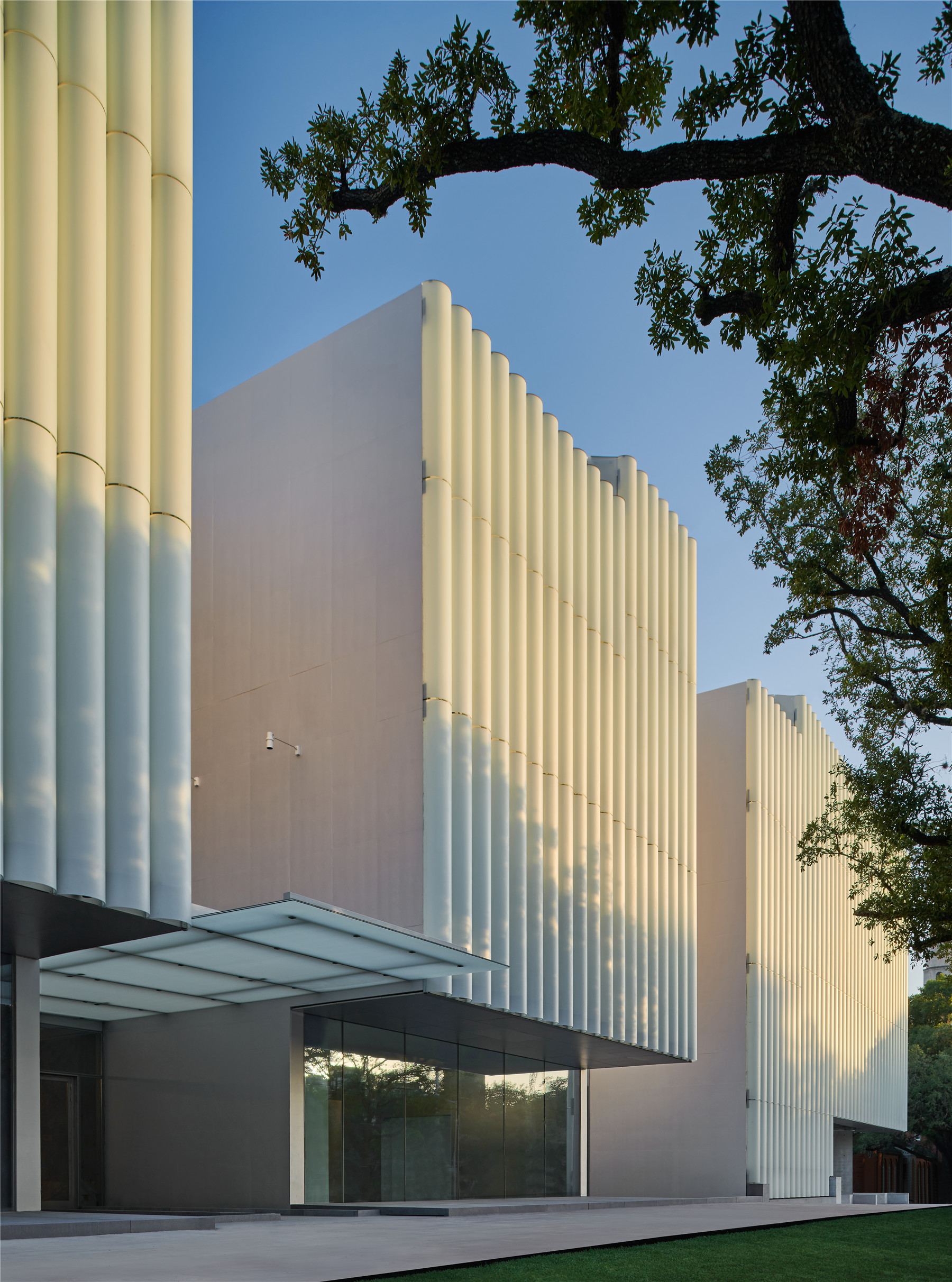
弯曲天花板带来的各种反射光线,有机塑造了画廊空间,使其以独特的方式使与具有新园区特色的茂密植被和水相关联。不同于以往机械、重复的光线,南希和里奇金德中心的光线是有机的、流动的,并与画廊的流线互相呼应。
The undersides of the curved ceiling become light reflectors, catching and sliding the light across each distinct gallery experience. These curved slices of light shape the gallery spaces in a unique way related to the organic qualities of the lush vegetation and water that characterize the new campus. Rather than mechanical and repetitive, the light is flowing, echoing the movement through the galleries.

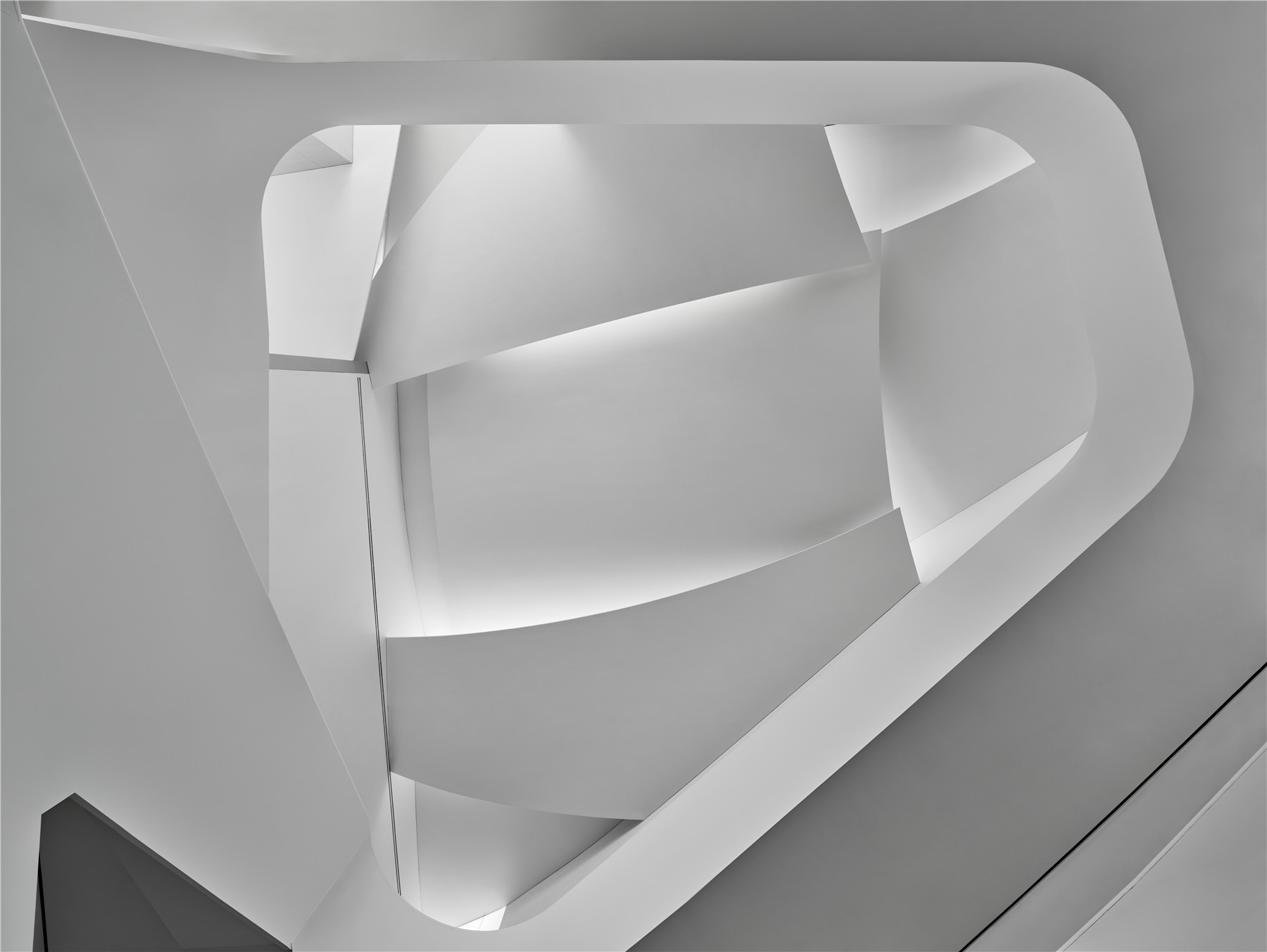
各个合适比例的画廊围绕着一个开放的公共空间展开。七个花园陆续出现在视野中,绿色的格子避免了眩光,并将画廊开放的流线打断。
The open flow through galleries is punctuated by views into the seven gardens with green trellises offering shade from glare. The galleries are centered around an open forum.

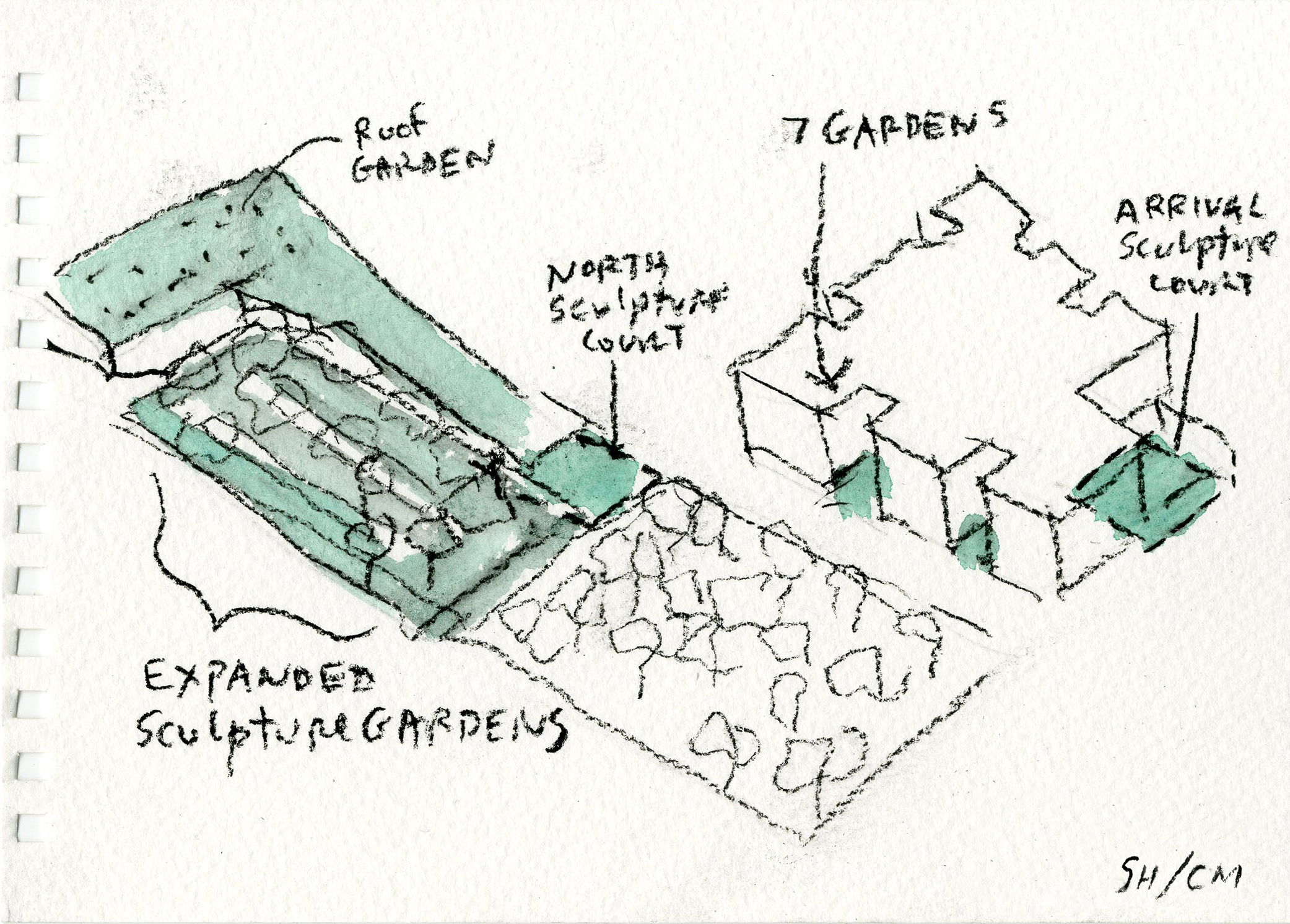


中央画廊的中庭为艺术展览提供了宽敞的空间,并为较高楼层提供了垂直交通。
The central gallery atrium provides generous spaces for the exhibition of art and vertical circulation to the upper floors.


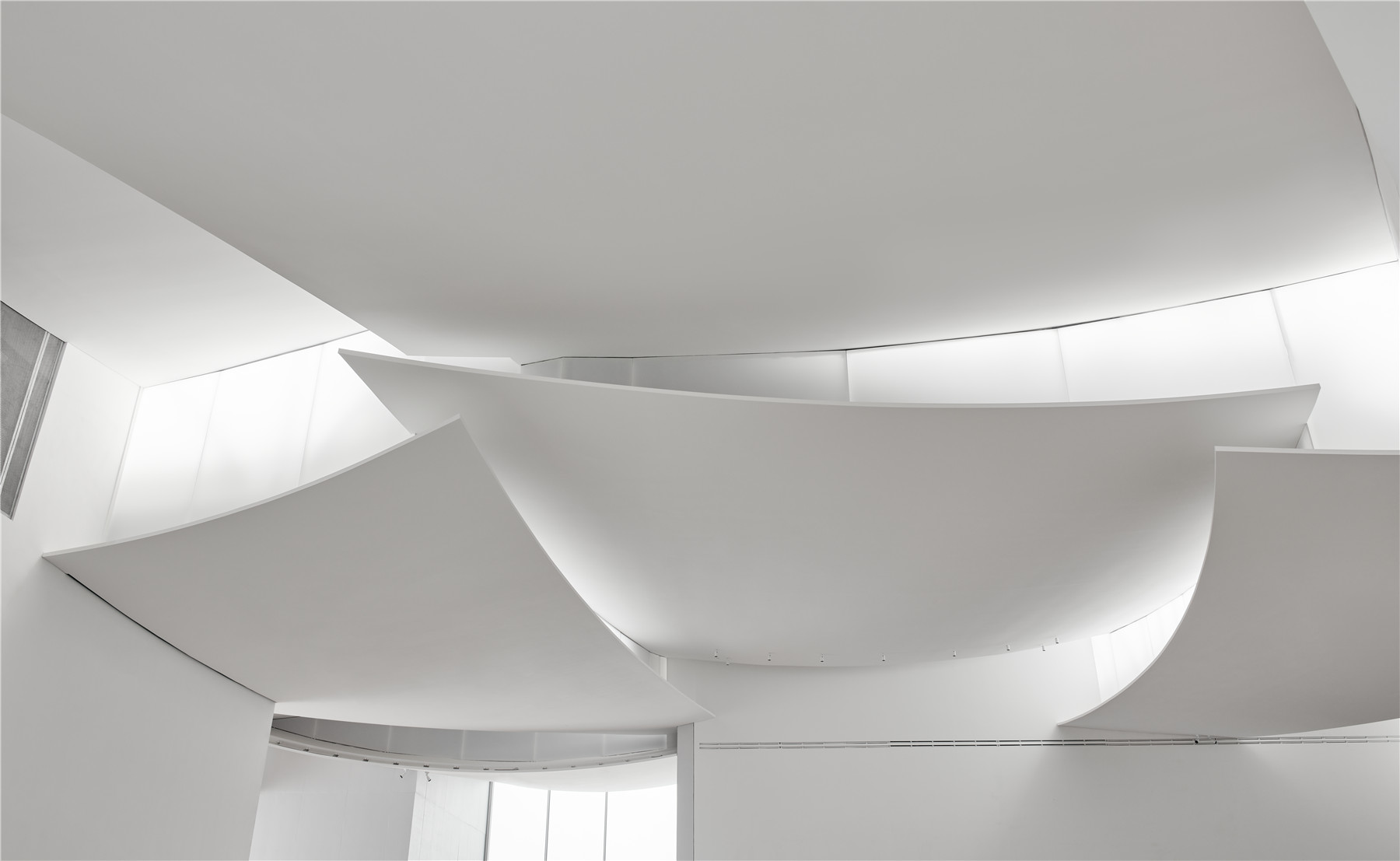



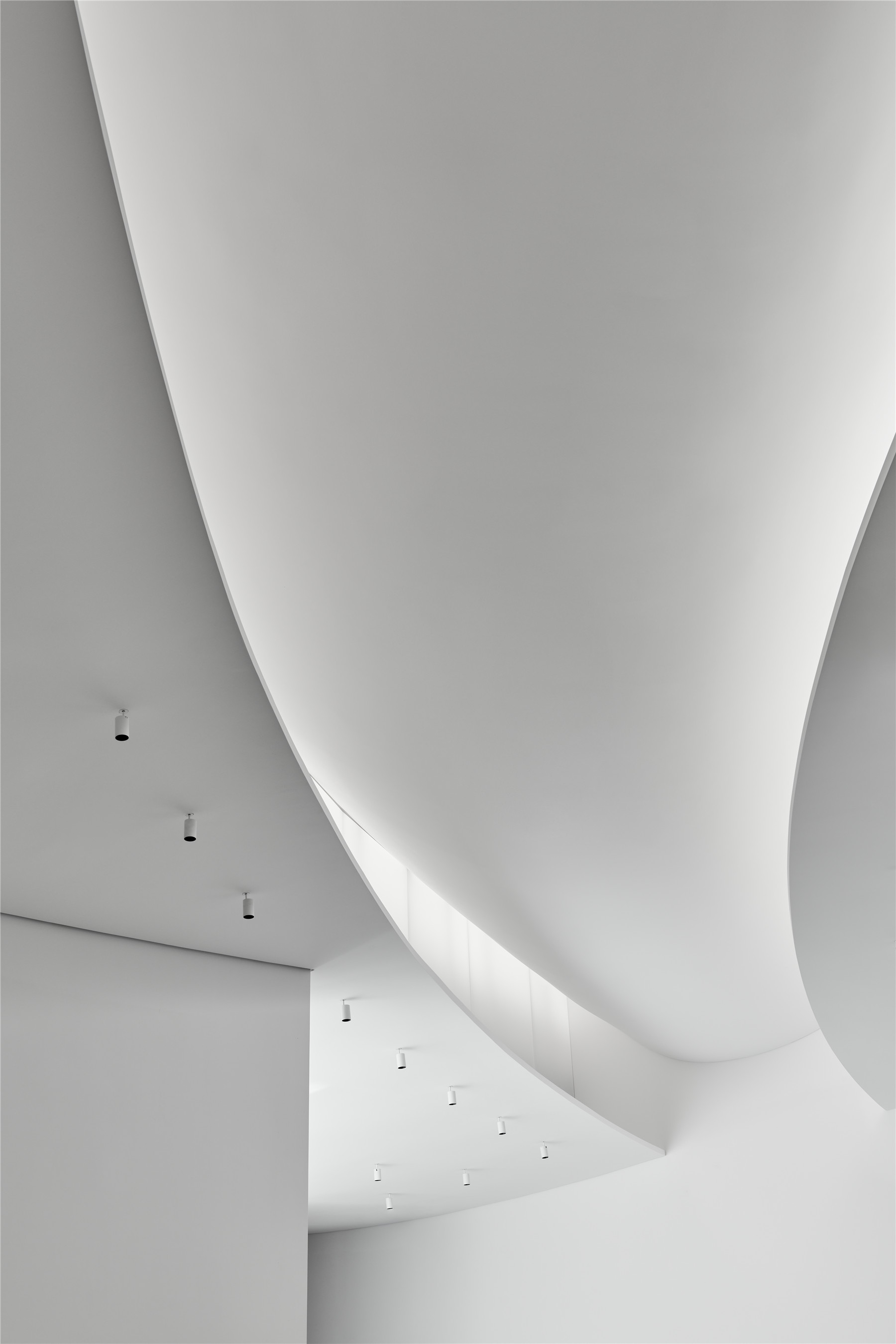
石头(1924),钢和玻璃(1958、1974)和石头(2000)的水平组合,促成了金德中心的半透明玻璃体量。其创新的玻璃管立面有着柔软、雪花石膏般的质感。30英寸的玻璃管同时在建筑的顶部和底部打开,产生了一个“冷护套”,从而获得烟囱效应,它降低了外墙70%的太阳能吸收率。在晚上,发光半透明立面反射在水上花园中,这亦体现博物馆的开放性。
The Kinder Building adds a horizontal architecture in translucent glass to the museum’s collection of stone (1924), steel and glass (1958, 1974), and stone (2000) buildings. Its innovative glass-tube facade has a soft, alabaster-like texture. The 30-inch tubes of glass open at the top and bottom, providing a “cold jacket” which reduces solar gain by 70% on the facades via the chimney effect of air circulation. At night, the glowing translucent facade is reflected in the water gardens and provides an open invitation to enter the museum.





设计图纸 ▽












完整项目信息
architect: Steven Holl Architects
Steven Holl ( principal )
Chris McVoy ( design architect )
Olaf Schmidt ( senior associate )
Filipe Taboada ( project architect )
Rychiee Espinosa, Yiqing Zhao, Lourenzo Amaro de Oliveira, Garrick Ambrose, Xi Chen, Carolina Cohen Freue, JongSeo Lee, Vahe Markosian, Elise Riley, Christopher Rotman, Yun Shi, Alfonso Simelio, Dimitra Tsachrelia, Yasmin Vobis, Yiqing Zhao (project team)
associate architects: Kendall / Heaton Associates
project manager: The Projects Group
structural engineers: Guy Nordenson & Associates, Cardno Haynes Whaley
MEP engineer: ICOR
climate engineers: Transsolar
lighting consultant: L'Observetoire International
cost estimator: Venue Cost Consultants
facade consultant: Knippers Helbig
construction period: August 2015 – November 2020
building area (square feet): 237,213
site area: part of 14.3-acre master plan
版权声明:本文图文由Steven Holl Architects授权发布,欢迎转发,禁止以有方编辑版本转载。
投稿邮箱:media@archiposition.com
上一篇:MAD新作:乐成四合院幼儿园,新与旧的“各自真实”
下一篇:隈研吾事务所新作:晴海CLT PARK,如阳光透过树林